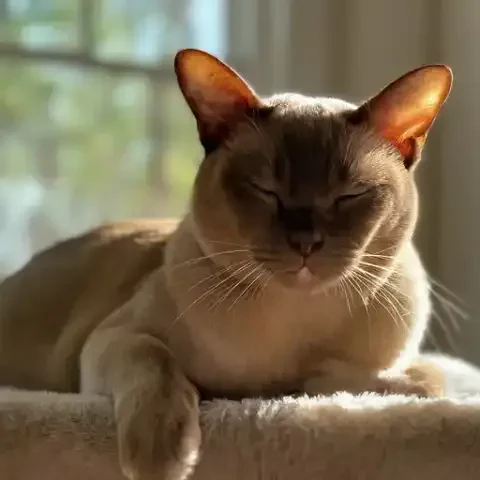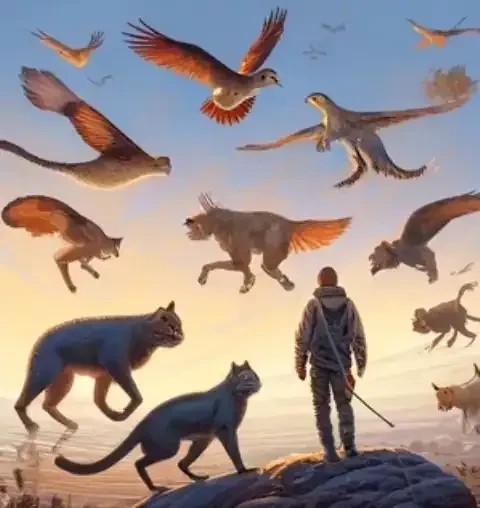The world cracks, the skies weep, the earth trembles, flames devour. Natural disasters – hurricanes that rage with the fury of mythical beasts, floods that swallow landscapes whole, earthquakes that shatter foundations, wildfires that paint horizons in terrifying hues – they are forces of nature that remind us of our vulnerability, leaving behind a trail of devastation and chaos. In the immediate aftermath, amidst the rubble and the tears, life often seems fragile, teetering on the brink. Yet, even in these moments of profound upheaval, life persists, whispers of resilience echoing through the wreckage. And sometimes, unexpectedly, these whispers come in the form of a purr, a soft meow, a flash of fur amongst the debris – the unwavering presence of cats. Often perceived as aloof and self-sufficient, cats in reality possess a remarkable adaptability and an inner strength that shines brightly in the face of adversity. Their survival stories, often overlooked amidst the larger human tragedy, are profoundly compelling, testaments to their tenacity, their instinct, and sometimes, their almost uncanny ability to navigate even the most catastrophic events. This article is dedicated to these remarkable feline survivors and heroes, to the true stories of cats who have endured, rescued, and shown extraordinary devotion in the heart of natural disasters, illuminating the unbreakable bond between humans and animals, a beacon of hope amidst the darkness. We will explore tales of survival against unimaginable odds, accounts of feline guardians alerting humans to danger, heart-wrenching stories of miraculous reunions, and instances of unexpected feline heroism, each narrative underscoring the quiet strength and enduring spirit of cats in times of crisis.
In the teeth of a hurricane, where winds scream like banshees and rain lashes down with relentless force, survival seems improbable, even for the most prepared. Yet, tales emerge from the storm-battered coastlines of cats who have defied the odds, clinging to life with a tenacity that belies their delicate appearance. Imagine a scene after a devastating flood surge – homes reduced to splinters, streets submerged, the air thick with the smell of damp earth and loss. Amidst this desolation, days, sometimes weeks later, a faint meow might break the silence. It could be Whiskers, a ginger tabby, found perched precariously on a floating piece of debris, days after Hurricane Hannah ripped through her coastal town. Separated from her family during the frantic evacuation, Whiskers, disoriented and terrified, likely found refuge clinging to a sturdy branch, then perhaps navigating to a floating raft of wood, her survival a testament to her instinct to seek higher ground and her inherent ability to endure prolonged exposure and lack of food. Or consider the aftermath of an earthquake, where buildings crumble like sandcastles, and the very ground beneath shifts and groans. In the labyrinthine wreckage of a collapsed apartment building, weeks after the tremors subsided, search and rescue teams, their hope dwindling, might hear a faint sound – a whimper, a rustle, and then, a clear, insistent meow. It could be Shadow, a sleek black cat, trapped in a small pocket of air within the debris, surviving for an astonishing seventeen days without food or water. Shadow, in the suffocating darkness and confined space, likely conserved energy, instinctively minimizing movement and maximizing every drop of moisture from condensation, his resilience born from a primal will to live, a testament to feline fortitude in the face of crushing adversity. Then there are the wildfires, raging infernos that consume landscapes in terrifying waves of heat and flame, forcing mass evacuations and leaving behind scorched earth. In the wake of such devastation, as firefighters dampen embers and residents tentatively return to their charred properties, stories of feline survivors begin to surface. Perhaps it’s Patches, a calico cat, found weeks after the Cedar Creek Wildfire swept through, emerging from the ashen landscape, her fur singed but her spirit unbroken. Patches, driven by instinct, likely fled the advancing flames, finding refuge in unburned pockets of vegetation, perhaps seeking shelter in rock crevices or underground burrows, instinctively navigating the terrifying landscape using her sharp senses and deep-seated survival instincts. These are not isolated incidents, but rather recurring whispers of feline tenacity – stories emerging from the wreckage of every major natural disaster, each a powerful reminder of the remarkable resilience encoded within these creatures, their ability to endure extreme conditions and survive against seemingly insurmountable odds, often utilizing instinct, resourcefulness, and an unwavering will to live.
Beyond their own survival, cats have also demonstrated an extraordinary capacity to act as guardian angels in fur, alerting humans to danger and even guiding rescuers to those in need. Accounts abound of cats exhibiting unusual and often frantic behaviors before disaster strikes, acting as a furry, four-legged early warning system. Imagine a quiet evening, the air still and heavy, a sense of unnatural calm before the storm. Suddenly, Mittens, a normally placid Persian, becomes agitated, pacing restlessly, meowing incessantly, scratching at the door, her anxiety escalating for no discernible reason. Moments later, the ground begins to tremble, the telltale rumble of an impending earthquake validating Mittens’s pre-disaster distress. Or consider a scenario where a river, swollen by days of torrential rain, is about to breach its banks. Suddenly, Tiger, a normally aloof tabby, becomes unusually clingy, persistently meowing at his owner’s feet, nipping at ankles, attempting to physically guide them away from the riverside home, exhibiting an insistent and uncharacteristic urgency that, in retrospect, served as a crucial pre-flood warning. These are not mere coincidences; they are compelling anecdotal accounts of cats seemingly sensing impending danger, exhibiting behavioral changes that precede human awareness, their heightened senses potentially detecting subtle environmental shifts – changes in atmospheric pressure, seismic tremors too faint for human perception, or subtle shifts in water levels – acting as natural barometers and furry prophets of doom.
In the chaotic aftermath of disasters, cats have also been known to participate, inadvertently or intentionally, in rescue efforts. Imagine a scene of frantic search and rescue after a building collapse, rescue workers painstakingly sifting through rubble, their efforts hampered by the sheer scale of devastation. Suddenly, a persistent meowing pierces through the noise of heavy machinery and worried voices. Following the sound, rescuers discover Whiskers, not trapped himself, but perched atop a pile of debris, meowing insistently towards a particular section of rubble. Investigating further, guided by Whiskers’s unwavering vocalizations, they uncover a pocket of space and find a trapped and injured survivor, Whiskers’s persistent meows having indirectly led rescuers to a life-saving discovery. Or consider a post-wildfire landscape, rescue teams searching for injured wildlife amidst the scorched terrain. A search dog, trained to detect human scent, might become distracted, pulling towards a thicket of unburned bushes, seemingly off-task. Following the dog’s lead, the team discovers not a human, but a ginger cat, persistently circling a small clearing, meowing and nudging at something hidden beneath leaves. Upon closer inspection, they find a family of orphaned raccoon kits, injured and separated from their mother, the cat, in a remarkable display of interspecies compassion, seemingly guiding rescuers to the vulnerable wildlife. While the “sixth sense” of cats in predicting disasters remains largely anecdotal, these stories of pre-disaster warnings and post-disaster rescue efforts are nonetheless compelling, hinting at a heightened sensitivity to environmental changes and a deep, perhaps instinctual, bond with their human companions, driving them to act in ways that seem almost preternaturally perceptive and even heroic.
Perhaps the most heartwarming stories emerging from the aftermath of natural disasters are those of miraculous reunions – tales of lost cats and their overjoyed owners finding their way back to each other against all odds, underscoring the unbreakable bond between humans and their feline companions. Imagine the despair of evacuation, the frantic scramble to safety, the heart-wrenching realization that in the chaos, your beloved cat has been lost, swallowed by the storm, dispersed by the earthquake, vanished in the wildfire. Hope dwindles with each passing day, yet, against all logical expectation, reunions do happen, defying distance, time, and the statistical improbability of finding a single cat amidst the widespread devastation. Accounts abound of cats lost during hurricanes, found months, even years later, miles away from their original homes, sometimes in completely unexpected locations. Patches, a tortoiseshell cat swept away in Hurricane Katrina, was miraculously reunited with her owner two years later, found living in a rescue shelter in a neighboring state, hundreds of miles from her original home, her journey an epic tale of survival and an improbable return. Mittens, a fluffy white cat, lost in the chaos of an earthquake in Nepal, was found wandering near a relief camp six months later, her microchip, miraculously still functional, leading rescuers to her owner who had thought her lost forever.
Microchips, often seen as a routine part of pet ownership, become absolute lifelines in disaster scenarios. Countless reunion stories hinge on the presence of a microchip, that tiny implant acting as a permanent ID, a beacon in the chaos, allowing shelters and rescue organizations to trace lost cats back to their families, even across state lines or international borders. Beyond technology, community efforts and the power of social media have become instrumental in facilitating these miraculous reunions. Dedicated individuals, volunteers, and animal rescue groups tirelessly scour disaster zones, setting up temporary shelters, sharing photos of found animals online, and leveraging social media platforms to spread the word, creating virtual lost-and-found networks that span geographical boundaries. The emotional impact of these reunions is profound, especially poignant in the context of loss and trauma experienced during a disaster. The overwhelming joy of a tearful reunion, the relief of having a beloved companion returned, the reaffirmation of the unbreakable human-animal bond amidst the wreckage of disaster – these moments of reunion are not just heartwarming anecdotes, but vital emotional anchors, providing solace and hope in the face of immense adversity, reminding us of the enduring power of love and connection even in the most challenging of times.
Beyond survival and rescue, cats have also shown unexpected heroism in natural disasters, providing comfort and emotional support in ways that are often overlooked but deeply significant. In the aftermath of trauma and loss, the simple presence of a cat can be profoundly therapeutic. Imagine a bustling disaster relief shelter, filled with displaced individuals, anxiety thick in the air, the weight of loss and uncertainty heavy on every shoulder. Unexpectedly, a stray cat might wander into the shelter, drawn by the scent of food or simply seeking warmth and shelter. Instead of being shooed away, this feline interloper might be welcomed, and something remarkable happens. The cat, sensing the collective stress and sadness, begins to move through the shelter, weaving between legs, rubbing against ankles, offering soft purrs and gentle head bumps, becoming an unexpected source of comfort and stress relief for both survivors and weary rescue workers alike. These feline visitors, often strays themselves, become impromptu therapy animals, their calming presence offering a moment of normalcy amidst the chaos, a reminder of the simple comforts of home and companionship. Even in the disrupted routines of disaster-stricken families, cats can play a vital role in maintaining a sense of normalcy and stability. Amidst the upheaval of temporary shelters or unfamiliar environments, a cat’s familiar routines – their predictable mealtimes, their need for play, their comforting presence in bed at night – can provide a grounding force for families, helping to re-establish a sense of order and predictability in a world turned upside down. Perhaps most profoundly, cats offer unconditional love in the face of loss, a silent, unwavering companionship that is particularly valuable for those who have experienced significant trauma or bereavement during a disaster. In the quiet moments of grief, a cat’s gentle purr, their soft warmth curled up beside you, their unwavering presence, can be a powerful source of solace, a tangible reminder of connection and affection in a time of profound emotional upheaval, a quiet heroism born of unconditional love and unwavering feline presence.
These remarkable stories of feline resilience and heroism offer not just heartwarming anecdotes, but valuable lessons in disaster preparedness for cat owners, particularly in disaster-prone areas. Microchipping and visible identification, repeatedly highlighted in reunion stories, cannot be overstated. Ensure your cat is microchipped and that your contact information is up-to-date. Always use visible ID tags on collars with current contact details, even for indoor cats, as disasters can cause unexpected escapes. Preparing emergency kits specifically for cats is crucial. This kit should include several days' worth of food and water, any necessary medications, a sturdy carrier, litter and a litter box, bowls, blankets, toys, and copies of important veterinary records. Developing evacuation plans and carrier training is essential for safe and efficient evacuation. Practice evacuating with your cat in their carrier to minimize stress during a real emergency. Train your cat to be comfortable entering and staying in a carrier, associating it with positive experiences like treats and playtime. Creating a safe room or designated shelter area within your home can provide immediate refuge during certain types of disasters, such as tornadoes or earthquakes. Identify a safe interior room, away from windows, and stock it with disaster supplies, including your cat’s emergency kit. Community and neighborhood preparedness is also important. Connect with neighbors, especially fellow pet owners, to share preparedness information, identify potential shared resources, and create a neighborhood-level animal welfare plan in case of disaster.
Beyond practical preparedness, we can also learn from feline instincts. Observing cat behavior for early warning signs, subtle changes in their demeanor or activity levels, can sometimes provide early indicators of environmental shifts or impending danger, allowing for proactive response. Respecting feline need for shelter and security is essential during stressful events. Provide cats with readily accessible safe spaces and allow them to retreat to these havens when they feel anxious or overwhelmed, understanding that their instinct for self-preservation is strong and their need for security paramount during times of chaos.
In the aftermath of natural disasters, amidst the stories of devastation and loss, the remarkable tales of cats offer a powerful and enduring message: hope persists, resilience endures, and the bond between humans and animals is a force of strength even in the face of unimaginable adversity. These feline narratives underscore the profound emotional connection we share with our animal companions, a connection amplified and made even more poignant by the shared experience of crisis. As we reflect on these remarkable stories of feline survival, rescue, and unwavering companionship, we are left with a lasting impression of hope – a testament to the enduring power of life, the resilience of spirit, and the quiet heroism of creatures great and small, reminding us that even in the darkest of times, whispers of resilience, sometimes in the softest of purrs, can guide us towards hope and healing. Perhaps, in learning from these remarkable feline examples, we can not only better prepare for future challenges, but also deepen our appreciation for the strength, resilience, and unwavering love that our animal companions offer, making them not just pets, but true partners in navigating the unpredictable journey of life, through sunshine and storms alike.







